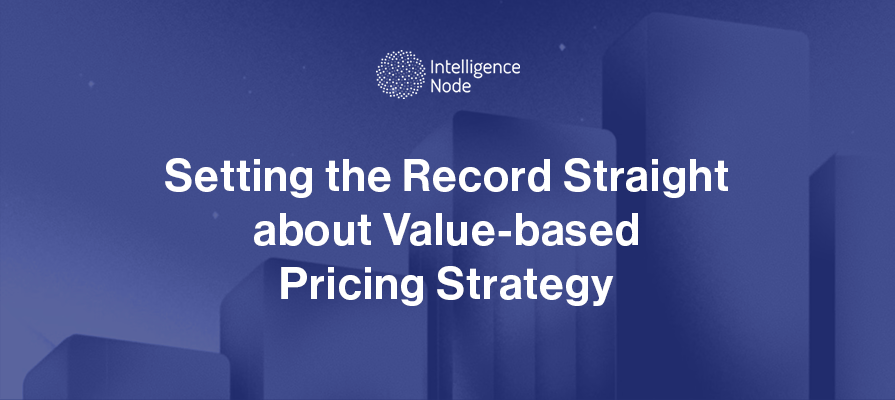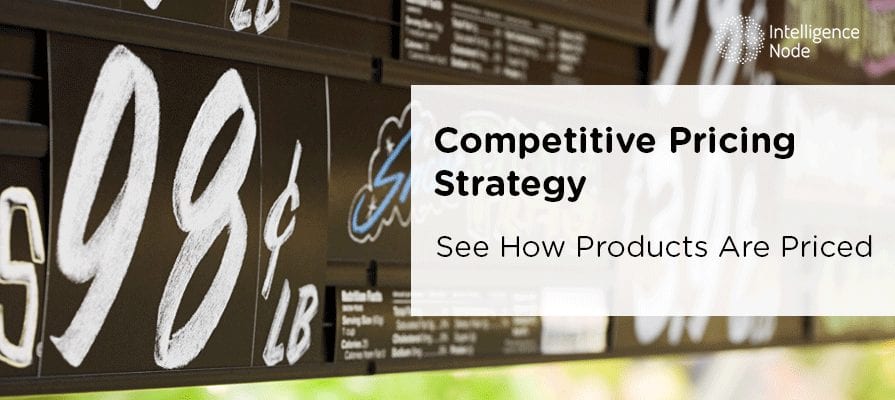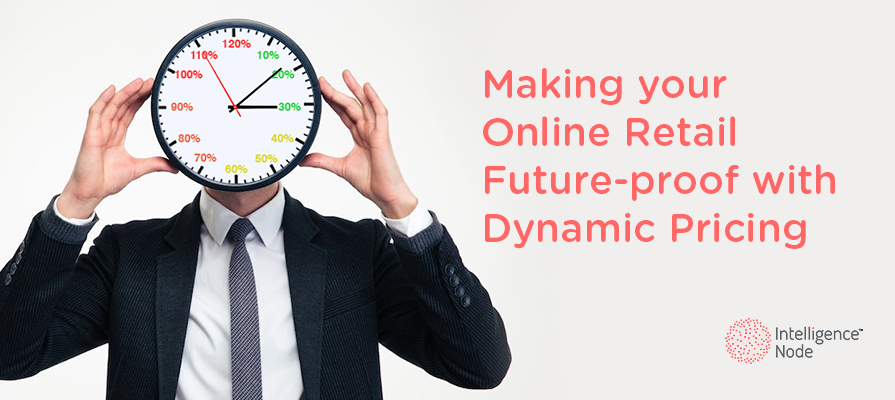Content Summary :
What is a Value-based Pricing Strategy?
Two Common Myths About Consumer Value-based Pricing Strategy
Steps to Follow in a Value-based Pricing Strategy
Cost-based Pricing Strategy vs Value-based Pricing Strategy
Advantages of Value-based Pricing
Disadvantages of Value-based Pricing
Should Your Business Use Value-based Pricing?
Pricing strategies are a core part of every business because they direct how the prices of your products and services will be set. Value-based pricing strategy or customer value-based pricing is a concept that has been around for quite some time and it is high time businesses get a good grasp of it. Value-based pricing strategy is among the top five pricing methodologies used by marketers. But unfortunately, it is also one of the most misunderstood among them all because business owners don’t fully comprehend its power or overestimate what it can do. Here is all that you need to know about value-based pricing strategy:
What is Value-based Pricing Strategy?
Value-based pricing strategy is also commonly known as perceived value pricing strategy or value-added pricing strategy. It is based on strategizing your pricing in line with how much value customers attach to that particular product or service. The higher the value of the product or service, the higher the price the customers are willing to pay. It is possible to increase your profitability with this method when you deliver a product or service which has a high perceived value. Value-based pricing is linked to the pricing of your competitors, and especially the pricing of the closest competitor that customers turn to if your product is not available.
Value-based pricing must be applied to a consumer segment. In case of multiple consumer segments, each must have its own value-based pricing strategy. It is imperative to understand that the key component of this pricing strategy is the differentiated worth of the product or service when compared to what your competitors offer. This can include one or more features that are unique in your product, packaging, or product quality. It involves pinning a dollar value to that differentiated worth and then pricing your product or service accordingly. This is understandably the most challenging step.
A value-based pricing example is the diamond industry where people are willing to spend as much as they can to profess their love with a diamond engagement ring. Although other gemstones are available at lower prices, the diamond is still the go-to and the socially acceptable norm because of how people perceive the diamond’s irreplaceable value. Luxury brands like Prada, Hermes, and Louis Vuitton and premium brands like Apple are examples of businesses that often use value-based pricing to their advantage.
Two Common Myths About Consumer Value-based Pricing Strategy
Myth: Brand value should dictate pricing when using a value-based pricing strategy
Customers are not going to flock to buy your products just because you have a higher brand value. Value-based pricing isn’t based on brand value per se. Marketers must not be foolish enough to count brand value as a factor for assigning a dollar value to their products. It is the features that matter and they should govern the prices that you attach to your products. Whatever extra feature can be assigned, a value should be considered in the final price when using this strategy. When you bring in a brand’s value, it complicates the equation which is why experts ignore the brand’s value when pricing products with this strategy.
Myth: Value-based pricing will always lead to success and higher revenue for every business
In reality, the success of this strategy also depends on how well your competitors have priced their products. If your competitors have priced their products quite low and the customers are happy with their offerings, then they are less likely to shift to yours if you are selling the product at exorbitant prices. This myth often pulls marketers away from reality as they have high expectations and get disappointed when customers show little interest in their product offering. If you want value-based pricing to work for you, then you need to understand your audience and ensure you are using intelligent pricing tactics to sell your product and earn profits.
Steps to Follow in Value-based Pricing Strategy
Here’s a deep dive into the three major steps you need to understand to establish a value-based pricing strategy that works for your business:
Step 1: Find your target consumer segment
The key to a value-based pricing strategy starts with researching your target consumer segment. You must perform thorough research that includes consumer demographics, income, spending habits, etc. Getting qualitative information from polls, interviews, and consumer surveys is an excellent way to truly understand your target audience. Your pricing is going to be based on how valuable your product or service is to them and what problems it solves. This means you must get to the root of the problem and see how much value your customer segment attaches to it.
Don’t ignore the power of your existing consumers because they can provide some enlightening insights that can help shape your pricing strategy. Make a questionnaire and ask them in granular detail to understand what is going on in their minds. If the need for the product is urgent and the customer segment is willing to shell out money, you have hit the jackpot. Feedback must always be considered as a treasure trove because it shows you what you are missing and what you need to improve the product.
Step 2: Know your direct competitors
Your competitors are the next step in devising your value-based pricing strategy. Do you know which competitor is offering a product that is closest to yours? Understand the market and the competitors that you are competing with. Value-based pricing strategy is based on relativity because you are going to price relative to your closest competitor. Which competitors are you focused on? When performing research on your competitors, look for one that consumers will turn to as the next best alternative to your product.
Step 3: Identify distinct features and assign value
When you know your competitors and their product offerings, you want to identify the distinct features that make your product stand out from theirs. Does your product include quality features that are missing in your competitor’s product? Do you have an improved and advanced feature that is missing in your competitor’s product? You want to go into depth for this as you will assign the value next which is crucial for the pricing of your product. You want to thoroughly compare your products with that of your competitor to get all the information you need to perform the next step.
Once you have completed your product research phase, it is time to assign a value. A common mistake is to break down the pricing and assign a price value to each feature of your product. This is simply a waste of time. Use the competitor’s price as a base and use it to assign value to the extra feature or features you have. Then assign a value of the differentiated feature or features and then add it to the base price to get the final price using the value-based pricing strategy.
Cost-based Pricing Vs Value-based Pricing
Cost-based pricing is another one of the basic pricing strategies. The main difference between cost-based pricing vs value-based pricing is the criteria they use. Cost-based pricing factors in the total cost of producing the final product and adding a profit margin to get the final price. Value-based pricing, on the other hand, emphasizes the product’s value and includes the differentiated worth to establish the final price of the product. Both require careful research in the initial stages to set the prices and apply them to different types of industries.
Advantages of Value-based Pricing
Improved profit margins
This pricing strategy does give way to higher profits as you are justifying your prices by offering a better product than that of your competitor. Think of luxury items that are sold at higher markups because of the value they hold in the consumers’ minds. Even if you are not retailing luxury items, you can get higher profit margins with this strategy as long as you have distinct features that are solving your target audience’s problems. It offers a practical way to improve profit margins for the long-term provided you are keeping a close watch on your competitor’s pricing.
Better market penetration
The research stage of value-based pricing unveils consumer behavior, needs, and what they attach value to. This enables you to better understand your consumers as you comprehend their requirements. This in turn empowers you to provide exactly what your consumer segment needs which leads to better market penetration. Constantly launching products that are first in the market and differentiated from ones that exist can give you the industry leader advantage as well as help you enjoy higher profits than your peers.
Automatic increase in brand value
Brand value is not part of the equation when calculating value-based pricing. But it can affect your brand value in a variety of ways. For instance, if you constantly launch superior-quality products at higher prices, your consumers will value that and associate you with a brand that is capable of bringing best-in-class products. This perceived value of your products will mean a higher value of your overall brand which can help you in your future product launches. This will only be the case when it is tied to superior advertising and marketing of your products.
Enhanced customer loyalty
You will enjoy better customer loyalty as a result of developing good quality products. When you are rolling out good products, your customers will trust you more and will be interested in buying from you in the future as well. A loyal consumer will repeat a purchase and is more likely to recommend your brand to his friends and family. When you reach out to your consumers for feedback, they feel valued and heard. This strengthening of relationships can go a long way.
Disadvantages of Value-based Pricing
Value-based pricing is not a bed of roses and comes with its set of pitfalls and disadvantages such as the following:
Not always highly profitable
A value-based pricing strategy does not guarantee that you can pocket all the profits because you will need to share the differentiated worth with your consumers. You will be required, at least at one point, to decrease the price even if it is by a bit through discounts and so on. If you don’t do that, you will lose out on customers and this can dip your revenue at the same speed that your profits increased when you first started selling your products. It is a double-edged sword that you must wield with caution and care for the best results.
Heavy reliance on competitor pricing
This pricing strategy is based on your competitor’s pricing. If they have priced their products pretty low, it is difficult for you to price your products high and attract consumers. The only way to win in such a situation is to show how your product stands apart from the competitors and thoroughly justify the price you are selling at. This requires continuous implementation of extensive research and excellent marketing strategies. You must also review and make changes to your pricing.
Read more at : Competitive Pricing Strategy – See How Products Are Priced
Difficult to sustain for long term
Value-based pricing is difficult to sustain when there are stores like Amazon that sell products at heavy discounts and come with added benefits for their consumers. It can also paralyze your business if the competitor slashes or changes its prices – which is the basis of your product price. This will need added effort from your end to justify the no-change in your prices. You can, in such a case, change your price by a bit or you can hold onto the price you set in the beginning while improving your marketing efforts to justify the stable high prices of your products.
Should your Business use Value-based Pricing?
Like every pricing strategy, value-based pricing is not perfect. It can be as successful as you make it. Careful planning, in-depth research of your competitors and target audience, and a close eye on the market will ensure you are making the most of this strategy. It can be beneficial for your business if you are willing to spend the time on insights and implementing the feedback you receive from your existing consumers. Using an AI-powered pricing platform like Intelligence Node makes it easy to make pricing decisions that resonate with your shoppers and convert them into loyal consumers.

Other pricing strategies : Competitive pricing Penetration Pricing Premium Pricing Skimming Pricing Psychological Pricing Amazon pricing Dynamic pricing Consumer Centric Pricing MAP Pricing




